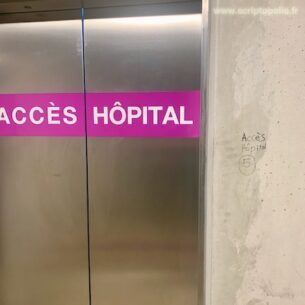Reborn
Oh boy, did they make us laugh, the promoters of those squares bearing cryptic geometric patterns. The revolution they promised seemed so futile, and its advent so unlikely. Come on: sticking these little codes everywhere, from products packaging to walls inside buildings and believing that people, armed with their smartphones, would use them to access web pages in a single move? What an idea. The whole operation was doomed to failure. Who would see the interest, after the first curious attempts, in using the Internet this way? And as we could imagine, in a few months, we saw the codes fade, detach themselves from the walls, and become meaningless. Our prophecies were being fulfilled: the technology would soon disappear due to a lack of use. It would probably persist, for instance in logistics, out of the public’s sight, but not on the scale we had been led to believe.
Then, a few years later, here they are again. The same codes are populating our lives and public spaces. They even appear to hold a new position: no longer an accessory element providing a link to a few additional information, but real entry points to operate the objects they equip, obligatory passages for brand-new services.
But what has changed? Is it this infamous “acceptability” that everyone is talking about that has worked wonders, as users are now ready to comply with these new uses? Of course not. In fact, the Internet and the Web themselves have changed. While it was hard to imagine the value of routinely flashing a code on the street or at your breakfast table to consult information online, it is very clear how useful this action is when it provides access to a powerful infrastructure that combines an object, user, payment method, and the terms of a commercial contract in a few seconds.







